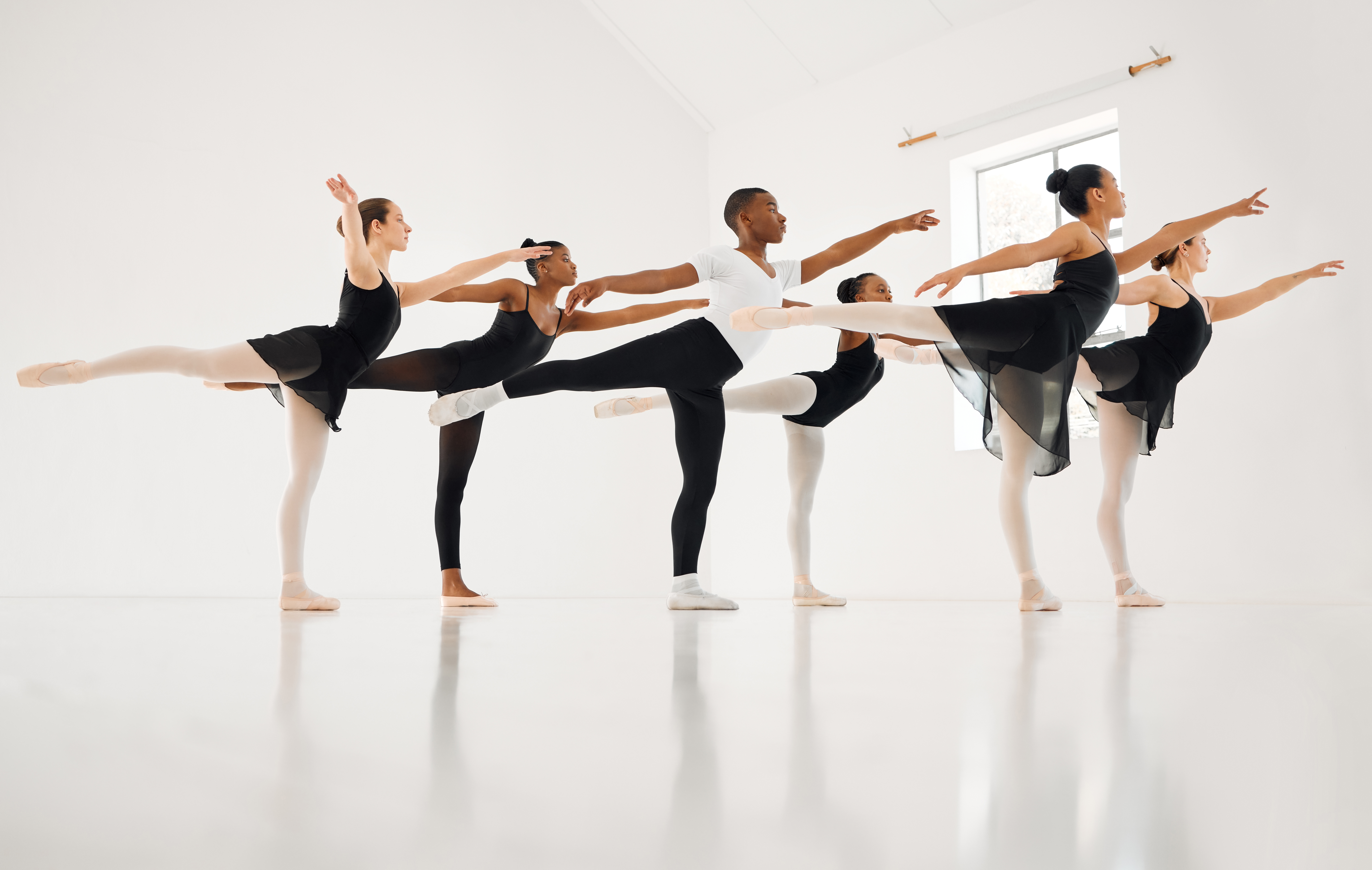
Dancers who can balance forever—whether on pointe, on a partner’s shoulders or in impossibly challenging positions—can seem like magicians, effortlessly mocking the laws of physics.
Though balancing comes easier to some dancers than others, the elements that make for long, strong balances are less mysterious than they may seem: “It really comes down to your visual input, your vestibular input, and your somatosensory input, or your proprioceptors,” says Dr. Emily Becker, a physical therapist who works with dancers at her practice in Jacksonville, Florida. Dancers with “good balance” can “put all those pieces together and make it work in a functional situation,” she says, and have the necessary core, glute, hip and ankle strength.
Help your dancers improve on each of these elements—and learn to integrate them—with these tips from Becker.
Limit Their Visual Input
If you’ve ever noticed dancers suddenly become wobbly when turned away from the mirror or onstage, that may mean they’re relying too heavily on visual feedback for their balance, rather than developing strong proprioceptors. “Messing with the visual system” can help students learn to rely less on seeing themselves, says Becker. She suggests having students dance without the mirror—either by covering it up facing away from it—at least occasionally.
You can also incorporate moments of closing the eyes entirely to force students to rely on their proprioceptors. Becker recommends this fondu exercise: Without holding onto a barre, complete a fondu to the front (either on relevé or flat). When you return to a coupé plié position, look up, then look down, then, with the head in a neutral position, close the eyes, then open them. Repeat 8 to 10 times, then switch to the other side.
Teachers of other genres can choreograph a moment of closed eyes into class whenever it feels safe to do so.
Challenge Their Vestibular System
Teaching movement that incorporates dynamic use of the head while balancing (like turning it side to side while on one leg) will train students’ vestibular (inner ear) system, says Becker.
She recommends this jumping arabesque exercise: Beginning in a parallel position facing forward, jump to face the right side of the room, landing in plié and with the left foot in a parallel coupé. Extend the left leg and arm into a second arabesque. From there, look up, then down, then right, then left. Continue by jumping to face the back of the room with the opposite leg in coupé and repeating the exercise. Continue to rotate and switch sides, for 10 to 15 reps or until fatigued.
Watch for Gripping
It’s only natural for students to want to hold on for dear life when they feel themselves falling off-balance. But gripping or stiffening up is usually counter-effective, especially when it comes to the tibialis anterior tendon on the top of the foot, which Becker says dancers often recruit when trying to maintain balance. “The problem is, that takes our hips out of the equation, and we have to rely more on the foot and the ankle,” she says. “We get into these patterns that aren’t as stable as if we use those big muscles up at the hip.”
If you notice students doing this (you’ll see that tendon pop up on top of their foot), encourage them to relax their toes into the floor, and work with them on engaging and strengthening the glutes.
More Balance Exercises to Try
- One-leg weighted arm circles: Standing on one leg (with the standing leg in parallel plié), hold a weighted ball above your head with the arms straight. Move the ball forward and backwards, side to side, and then in a circle. Continue moving for 15–30 seconds or until fatigued, then switch sides. To make it more difficult, look up at the ball. (Becker particularly recommends this one for dancers who need to lift their partners.)
- Standing bird-dog: Beginning in a turned-in first arabesque with the standing leg in plié, bring the elbow and knee in towards the torso to meet one another, then extend back out. Repeat 10–15 times or until fatigued, then switch sides.
- Standing C-curve: Stand with one leg in a parallel coupé, the other leg parallel and bent, and the arms overhead. Extend the working leg to the side while bending at the waist to reach the arms towards the leg (forming a “C”), then return to the starting position. Repeat 10–15 times or until fatigued, then switch sides.
- Rotating skaters: Beginning in a parallel coupé plié, jump laterally towards the working leg while rotating 90 degrees. Continue jumping back and forth between the two legs while rotating to each side of the room. Repeat 10–15 times or until fatigued.
Watch the video below to learn a variety of exercises that you can implement in class to challenge and help your students balance better.





